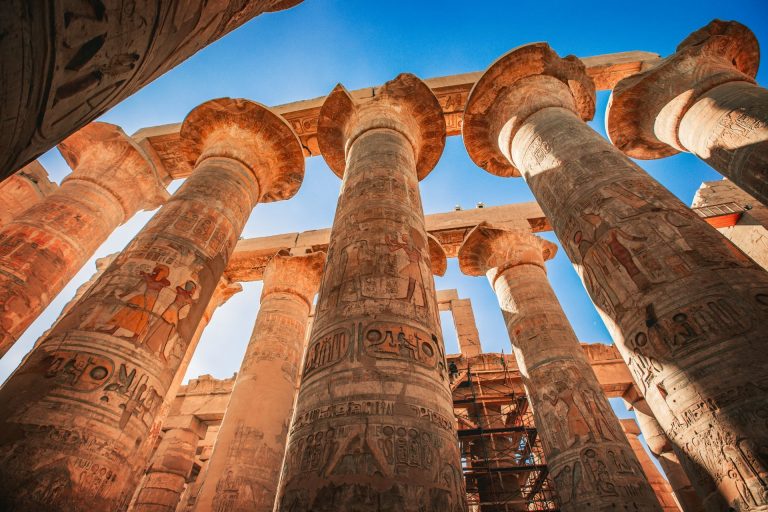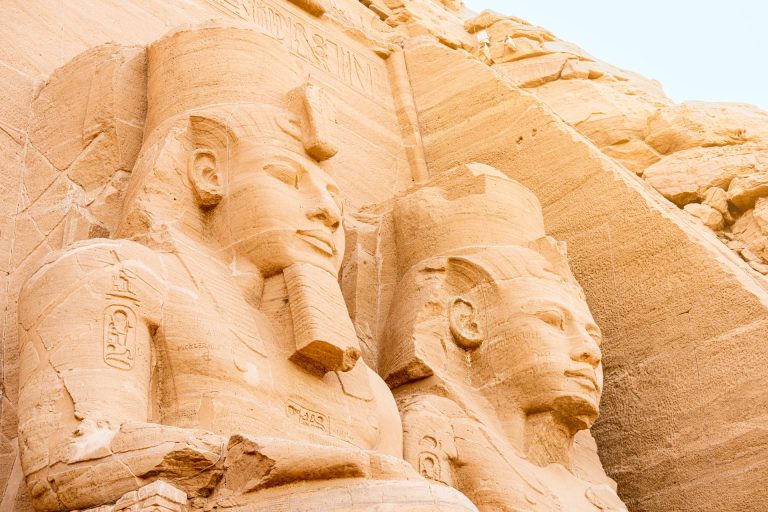Unveiling the Queens
A Closer Look at the Influential Women of Ancient Egypt
Step back in time and explore the fascinating world of ancient Egypt, where queens held immense power and influence. From the iconic Cleopatra to the enigmatic Nefertiti, these remarkable women left a lasting impact on the empire’s history and culture. In this blog post, we will take a closer look at the influential queens of ancient Egypt, delving into their roles, achievements, and legacies. Discover the secrets of their reigns, their contributions to art, politics, and society, and the enduring allure that still surrounds them to this day. Join us as we unveil the captivating stories and unravel the mysteries of these legendary queens, shedding light on their extraordinary lives and the remarkable legacy they left behind in the sands of time.
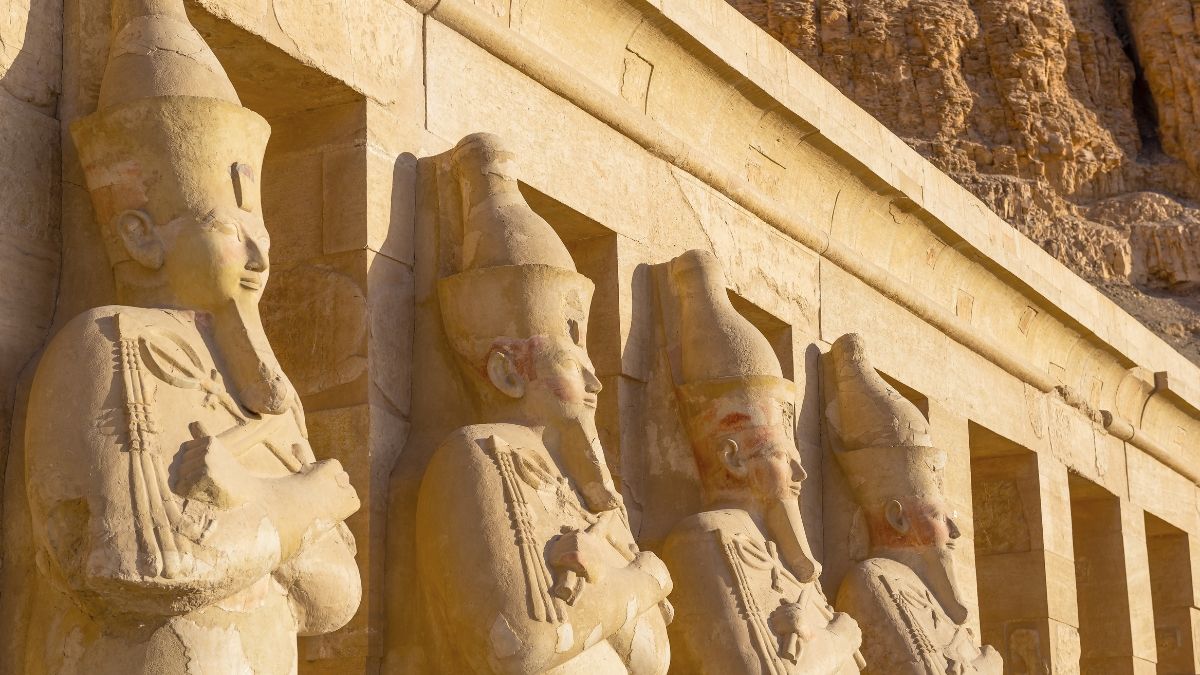
The role of queens in ancient Egypt
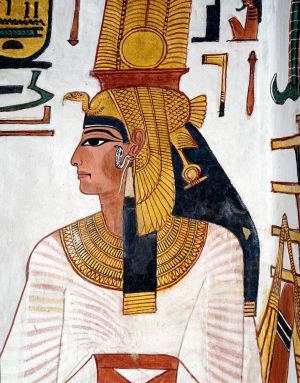
Queens in ancient Egypt enjoyed a unique status compared to their counterparts in other civilizations. They were considered the Great Royal Wife of the pharaoh, symbolizing an elevated position that showcased their importance and authority. The queen’s role went beyond mere ceremonial duties; they actively participated in governing the kingdom and were often involved in decision-making processes. One of the primary responsibilities of queens was to produce an heir to the throne. As the mother of the future pharaoh, the queen’s role in ensuring the continuity of the royal lineage was paramount. To achieve this, queens underwent rigorous rituals and practices aimed at fertility and childbirth, as the birth of a healthy heir was crucial for the stability of the kingdom. Furthermore, queens in ancient Egypt were closely tied to religious and spiritual practices. They often held the title of “God’s Wife of Amun,” which granted them immense religious authority. This role allowed queens to act as intermediaries between the people and the gods, making offerings and performing rituals on behalf of the kingdom’s wellbeing. Notable queens in ancient Egypt, such as Hatshepsut and Cleopatra, left an indelible mark on history. Hatshepsut, who famously ruled as a pharaoh in her own right, successfully led the kingdom through a period of peace and prosperity. Cleopatra, the last queen of the Ptolemaic dynasty, was known for her intelligence, charm, and political acumen, forging alliances and captivating influential figures of her time. In conclusion, queens in ancient Egypt were not mere figureheads; they held significant power and influence within the kingdom. They played vital roles in politics, religion, and culture, shaping the history and legacy of the ancient Egyptian civilization. Their contributions are a testament to the strength and prominence of women in ancient societies.
Cleopatra: The Last Pharaoh of Egypt
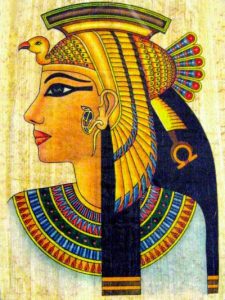
Cleopatra is arguably one of the most well-known and influential women in ancient history. Her reign marked a significant period of political and cultural change in Egypt. Cleopatra was not only a ruler but also a diplomat, strategist, and seductress, who captivated the hearts and minds of powerful men. Cleopatra’s intelligence and charisma were her greatest assets. She spoke multiple languages fluently, including Egyptian, Greek, and Latin, which allowed her to communicate effectively with a wide range of people. This linguistic prowess played a crucial role in her diplomatic negotiations and alliances with Rome. Known for her beauty, Cleopatra used her charm and allure to her advantage, captivating the likes of Julius Caesar and later Mark Antony. She strategically positioned herself as a powerful ally of Rome, using her relationships to protect Egypt’s interests and maintain her own power. Beyond her personal relationships, Cleopatra was a shrewd politician and leader. She actively promoted Egyptian culture and traditions, embracing her Egyptian heritage and presenting herself as the embodiment of the pharaohs. This cultural revival helped solidify her position as the rightful ruler of Egypt, garnering support from the Egyptian people. Cleopatra’s reign was not without challenges, however. She faced opposition from rival factions within Egypt and a shifting power dynamic in the Roman Empire. Ultimately, her downfall came with the defeat of Mark Antony in the Battle of Actium and the subsequent annexation of Egypt by Rome. Despite her eventual defeat, Cleopatra’s legacy continues to captivate historians and artists alike. Her story has been romanticized and immortalized through numerous works of literature, theater, and film. Cleopatra remains a symbol of female power, intelligence, and resilience, forever etched in the annals of ancient history.
Nefertiti: The Beauty of the Nile
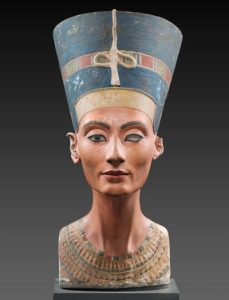
Nefertiti, often referred to as the “Beauty of the Nile,” is one of the most iconic and influential women of ancient Egypt. Known for her stunning beauty and regal presence, she was the wife of Pharaoh Akhenaten and played a significant role in shaping the religious and artistic landscape of ancient Egypt during the 14th century BC. Nefertiti’s name translates to “the beautiful one has come,” and her iconic image is instantly recognizable with her gracefully elongated neck, high cheekbones, and captivating almond-shaped eyes. Her bust, discovered in 1912, has become one of the most famous works of art in the world, showcasing her exceptional beauty and the skill of ancient Egyptian craftsmen. Beyond her physical appearance, Nefertiti was also a powerful and influential queen. She is believed to have held significant political and religious power, possibly even co-ruling alongside Akhenaten. During their reign, they introduced the worship of Aten, the sun disk, as the supreme god, revolutionizing the religious beliefs of the time. Nefertiti’s influence extended to the art and culture of ancient Egypt. The Amarna Period, marked by her husband’s religious reforms, witnessed a shift in artistic style, with a focus on naturalism and a departure from the traditional rigid artistic conventions. Nefertiti herself was often depicted in artwork, showcasing her elegance and grace. Despite her prominent role in ancient Egyptian history, many aspects of Nefertiti’s life remain shrouded in mystery. Her exact lineage, the circumstances of her disappearance from historical records, and the location of her final resting place are all subjects of ongoing debate and speculation. Nevertheless, Nefertiti’s legacy as an influential queen and symbol of beauty and power endures. Her striking image continues to captivate and inspire, reminding us of the remarkable women who shaped the ancient world.
Hatshepsut: The Female Pharaoh
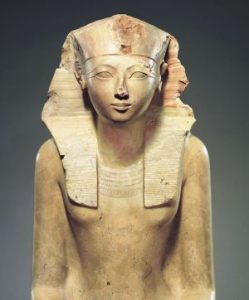
In the vast history of ancient Egypt, one name stands out among the rest when it comes to powerful women – Hatshepsut. Known as the Female Pharaoh, she defied societal norms and shattered glass ceilings during her rule. Hatshepsut ascended to the throne in the 15th century BC, making her one of the earliest female rulers in recorded history. Hatshepsut’s reign was characterized by her ambitious and innovative approach to leadership. She not only held the title of pharaoh but also proclaimed herself as a king, donning the traditional male regalia of the pharaohs. This extraordinary move allowed her to solidify her authority and assert her power in a male-dominated society. Under Hatshepsut’s rule, Egypt flourished economically, politically, and culturally. She embarked on impressive building projects, including the construction of the iconic mortuary temple of Deir el-Bahari in Luxor. This architectural masterpiece still amazes visitors today with its grandeur and intricate design. Beyond her remarkable achievements as a ruler, Hatshepsut was also known for her strong focus on trade and diplomacy. She established valuable trading relationships with neighboring kingdoms, expanding Egypt’s influence and economic prosperity. Her expeditions to the mysterious land of Punt, in modern-day Somalia, were particularly significant, as they brought back exotic goods, valuable resources, and captured the imagination of her people. Despite her remarkable accomplishments, Hatshepsut’s legacy faced a period of erasure after her death. Her successor, Thutmose III, attempted to eliminate her presence from history, removing her name and images from monuments and inscriptions. It wasn’t until modern archaeological discoveries and research that her true significance was rediscovered and celebrated. Hatshepsut’s reign serves as a testament to the exceptional power and intellect that women possessed in ancient Egypt. Her courage and determination paved the way for future female leaders, inspiring generations to come. Today, her story continues to captivate the world, reminding us of the indomitable spirit of women throughout history who dared to defy expectations and leave an enduring mark on civilization.


